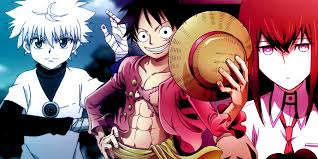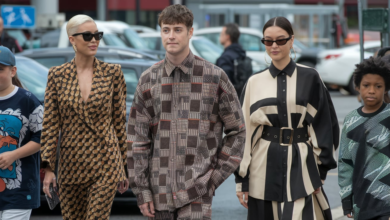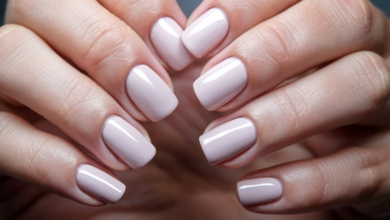Guide to Anime Boys: Exploring the Charm and Diversity Anime

Introduction
Anime has captivated audiences around the world with its vibrant storytelling, breathtaking visuals, and unforgettable characters. Among these, anime boys have emerged as some of the most iconic and cherished figures in pop culture. Whether they are fearless heroes, brooding anti-heroes, or comedic sidekicks, anime boys play a pivotal role in shaping the emotional depth and appeal of a series. In this guide, we will delve into the archetypes, evolution, and cultural impact of anime boys, celebrating their unique charm and widespread popularity.
The Archetypes of Anime Boys
Anime boys are diverse and multifaceted, often fitting into archetypes that define their personalities and roles within a story. Let’s explore some of the most prominent types.
1.1 The Cool and Mysterious Type
These characters exude an aura of intrigue, often shrouded in secrecy and emotional restraint. They captivate audiences with their sharp intellect, calm demeanor, and often tragic backstories. Levi Ackerman from Attack on Titan is a prime example. His stoic nature, combined with his unparalleled combat skills, makes him a fan favorite. Similarly, Sasuke Uchiha from Naruto embodies this archetype with his quest for vengeance and complex moral struggles. The cool and mysterious anime boy often represents a figure of strength and resilience, earning admiration and fascination from fans.
1.2 The Energetic and Optimistic Hero
These characters are the heart of their series, bringing boundless energy and unyielding determination. Naruto Uzumaki from Naruto and Luffy from One Piece are iconic examples. They inspire viewers with their perseverance in the face of adversity and their unwavering commitment to their dreams. Their infectious optimism and ability to rally those around them make them not only great leaders but also beloved protagonists who resonate with audiences of all ages.
1.3 The Intelligent and Strategic Mastermind
These anime boys rely on their intellect rather than brute strength to navigate challenges. Characters like Light Yagami from Death Note and Lelouch Lamperouge from Code Geass captivate audiences with their cunning strategies and moral dilemmas. Their brilliance often blurs the lines between hero and villain, adding layers of complexity to their personalities. These characters appeal to viewers who appreciate thought-provoking narratives and psychological depth.
1.4 The Comedic and Lovable Sidekick
Not every anime boy is a brooding hero or mastermind. Some bring levity and charm to their series through humor and heartfelt moments. Characters like Kazuma Satou from Konosuba and Zenitsu Agatsuma from Demon Slayer are masters of comedic relief. Their relatable flaws and exaggerated antics provide balance to intense storylines, making them indispensable to the narrative.
The Evolution of Anime Boys Through Time
The portrayal of anime boys has undergone significant changes over the decades, reflecting shifts in societal norms and storytelling trends.
In the 1980s and 1990s, anime boys were often characterized as traditional heroes, embodying courage, honor, and a clear sense of right and wrong. Characters like Goku from Dragon Ball set the standard for shonen protagonists, showcasing immense physical strength and a strong moral compass.
As anime evolved in the 2000s and beyond, male characters became more nuanced and multidimensional. Anti-heroes like Eren Yeager from Attack on Titan and morally complex figures like Itachi Uchiha from Naruto emerged, challenging the binary notions of good and evil. This evolution allowed writers to explore deeper themes, resonating with a more mature audience.
Today, anime boys continue to push boundaries, with creators experimenting with unconventional traits and roles. The rise of bishounen (beautiful boys) and non-traditional male leads highlights the growing diversity and inclusivity within the anime industry.
The Role of Anime Boys in Popular Series

Anime boys often drive the narrative and captivate audiences with their compelling journeys and relationships.
3.1 Shonen Protagonists
Shonen anime, known for its action-packed plots, often revolves around a male protagonist with a dream or goal. Characters like Tanjiro Kamado from Demon Slayer embody perseverance and selflessness, traits that inspire viewers. Their journeys are filled with trials and triumphs, showcasing their growth as individuals and heroes.
3.2 Romantic Leads and Bishounen Characters
In shojo and josei genres, anime boys often take on the role of romantic leads. Their charm, elegance, and emotional depth make them irresistible to audiences. Characters like Tamaki Suoh from Ouran High School Host Club and Howl from Howl’s Moving Castle are celebrated for their captivating personalities and swoon-worthy moments. These characters often blur the line between reality and fantasy, appealing to fans seeking escapism and romance.
3.3 Supporting Characters Who Steal the Show
Sometimes, it’s the supporting characters who leave the biggest impression. Gojo Satoru from Jujutsu Kaisen and Itachi Uchiha from Naruto are prime examples. Their charisma, backstories, and unique abilities often overshadow the protagonists, earning them devoted fanbases.
The Impact of Anime Boys on Pop Culture
Anime boys have left an indelible mark on global pop culture. Their influence extends beyond the screen, shaping trends in cosplay, merchandise, and fan art. Characters like Goku, Naruto, and Levi have become cultural icons, inspiring countless tributes and adaptations.
Moreover, the appeal of anime boys has contributed to the global growth of anime. Their diverse personalities and relatable struggles resonate with fans from different cultural backgrounds. Whether through memes, fanfiction, or conventions, anime boys have become symbols of creativity and connection within the anime community.
Conclusion
Anime boys are more than just fictional characters; they are vessels of storytelling, emotion, and imagination. From stoic warriors to comedic sidekicks, their diverse archetypes and compelling narratives continue to captivate audiences worldwide. As anime evolves, so too will the portrayal of these beloved characters, ensuring their place in the hearts of fans for generations to come. So, who is your favorite anime boy, and what makes them special to you? Join the conversation and celebrate the magic of anime.
FAQs
Q1: What makes anime boys so popular among fans?
A: Their diverse personalities, intriguing backstories, and relatability make them captivating to audiences.
Q2: Who is the most iconic anime boy of all time?
A: While opinions vary, characters like Goku (Dragon Ball) and Naruto (Naruto) are often regarded as legends in anime.
Q3: Are anime boys only popular with female audiences?
A: No, anime boys appeal to fans of all genders due to their depth, charisma, and roles in compelling stories.
Q4: How can I start watching anime with great male characters?
A: Begin with classics like Naruto, Attack on Titan, or Fullmetal Alchemist: Brotherhood.
Q5: What are bishounen characters?
A: Bishounen refers to beautiful, androgynous male characters often featured in shojo or fantasy anime.
Q6: Do anime boys reflect real Japanese culture?
A: While some traits may be inspired by cultural elements, most are fictionalized for entertainment purposes.



